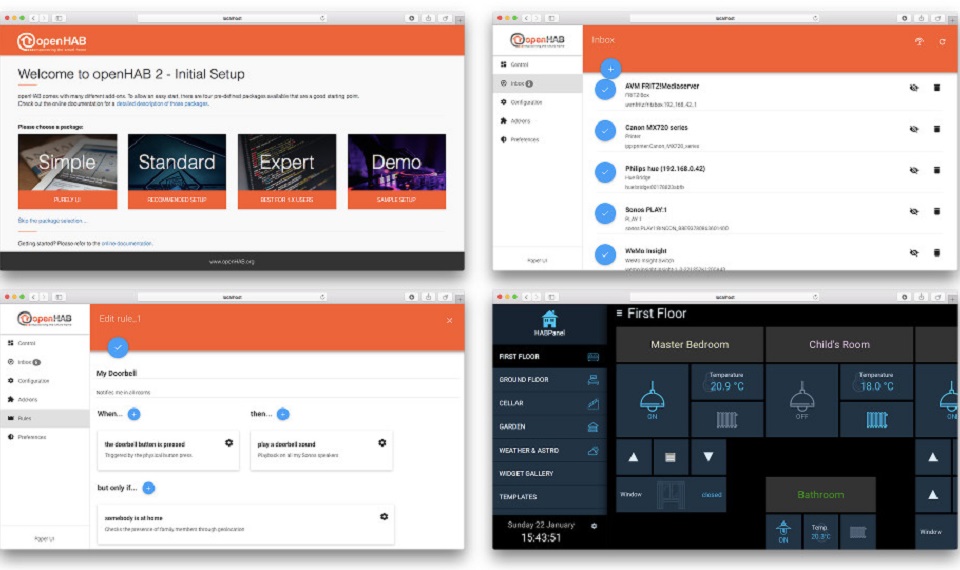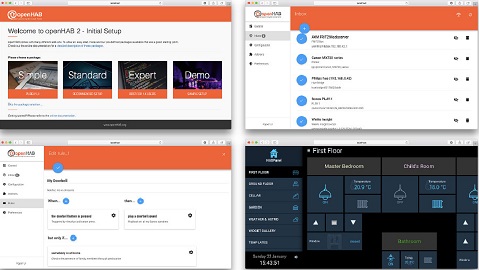Musala Soft became the only Bulgarian company that is a member of the openHAB Foundation (http://www.openhabfoundation.org/). OpenHAB is one of the most advanced opensource platforms, which integrates different systems and technologies for home automation into a single solution, enabling the unified and centralized management of devices from different manufacturers. The platform allows its users to build their own smart home and office, giving the means to integrate multiple devices and define the rules that allows them to interact effectively. OpenHAB provides several pre-made types of controlling and monitoring user interfaces for browsers and mobile devices.
In late January, Kay Kreutzer, founder of the project, announced the release of the second version of openHAB – openHAB 2.0. The new version is based on the Eclipse SmartHome project, which serves as an abstraction and translation framework that makes interaction possible across system and protocol boundaries. The platform comes with complete integrations (bindings) for over 130 different devices, web services, protocols and utilities for improving the user experience. Almost half of the available bindings in openHAB 2.0 use the new structure of Eclipse SmartHome. Thanks to it, new devices are automatically detected and configured directly through the graphical user interface. The new version of openHAB includes more product vendors such as AllPlay, Miele @www.musala.com home, Minecraft, Russound, Z-Way, Tesla and more. More information about openHAB and Eclipse platforms SmartHome can be found in an interview by Dimitar Ivanov (only in Bulgarian), Team Leader at Musala Soft at dev.bg.
The new version’s capabilities, for setting up a smart home system, has been extended through improvements in the graphical user interface. One of the main improvements, which provides the utmost convenience users, is the ability to view supported devices that are available in users’ network and add them to openHAB with a single click. There are currently mechanisms for defining IFTTT (if this, then that) type rules, which allow the user to define conditions for mutual interaction of the devices and the services. Some examples of such rules are switching on lights when detecting a person at home, opening the blinds to allow sunlight to come in and controlling devices through gestures or speech.
Besides the classic zip archives as well as the APT packages for Linux, there are by now many further alternatives how to get hold of openHAB on other platforms such as Raspbery Pi, Pine64, QNAP-NAS. A Docker container for x86 and ARM architectures can also be found on the project website. This makes the platform more accessible to users without specialised IT knowledge because the system can be configured and installed easily for these specific devices.
OpenHAB 2.0 is a huge step forward and strengthens the platform as a leading open-source projects in the field of development of smart homes.
Information source: (http://www.kaikreuzer.de/2017/01/23/openhab2/)


